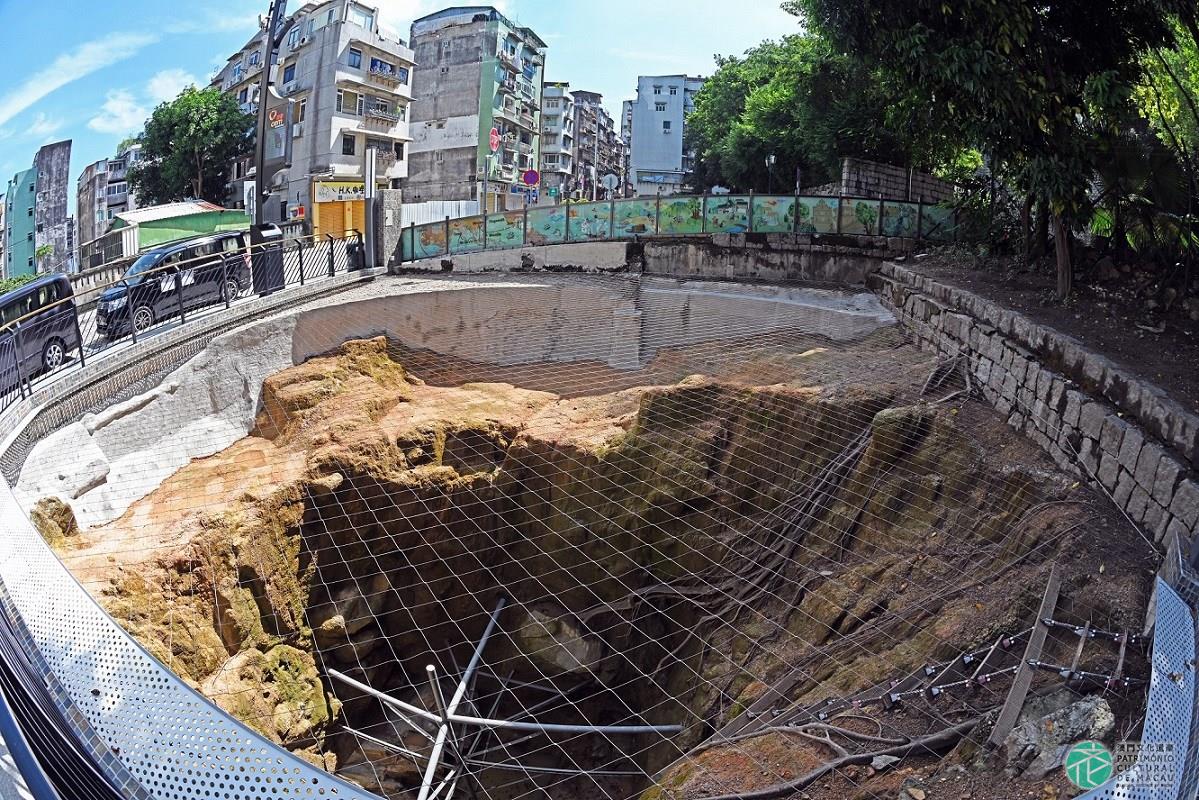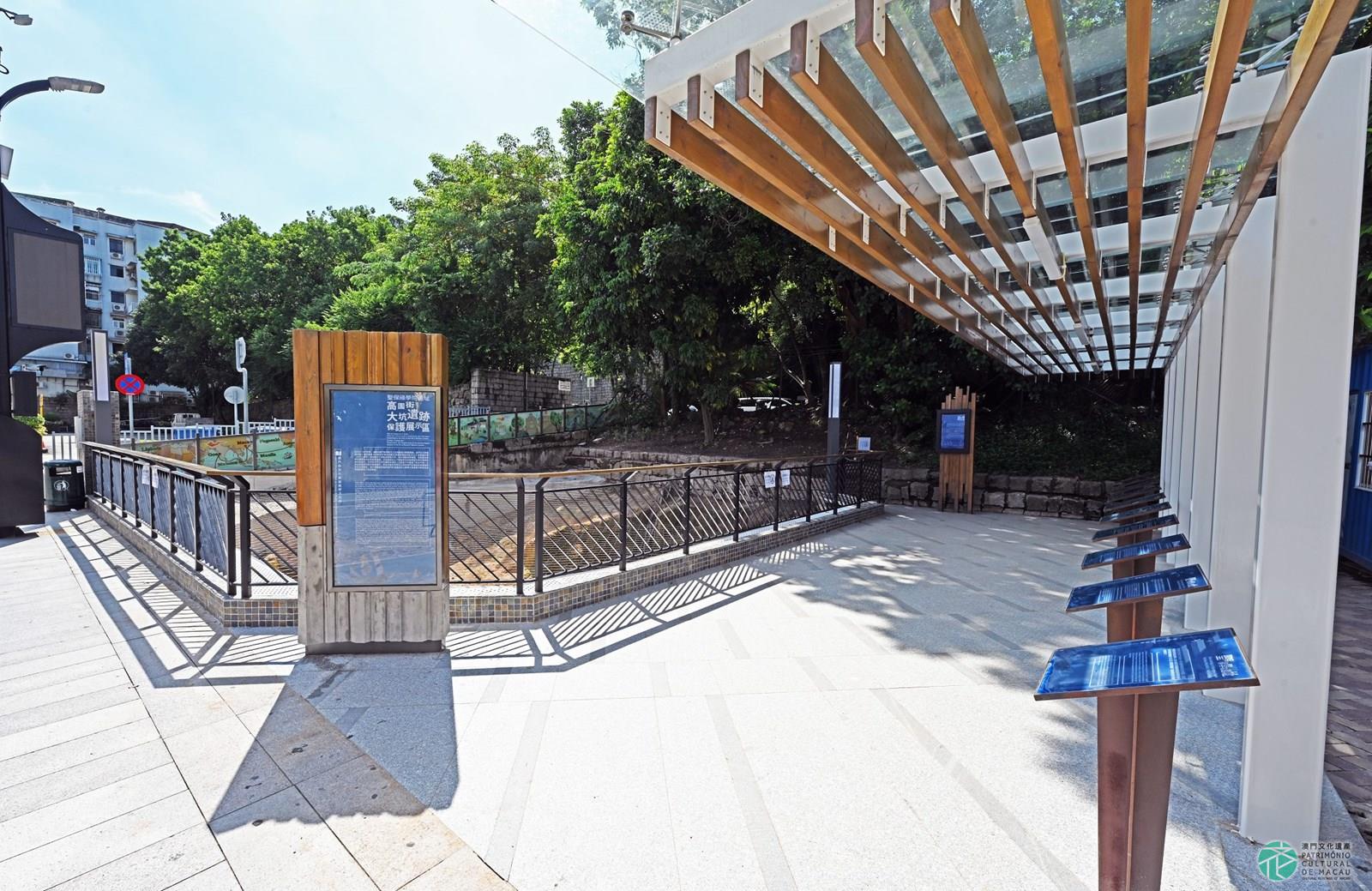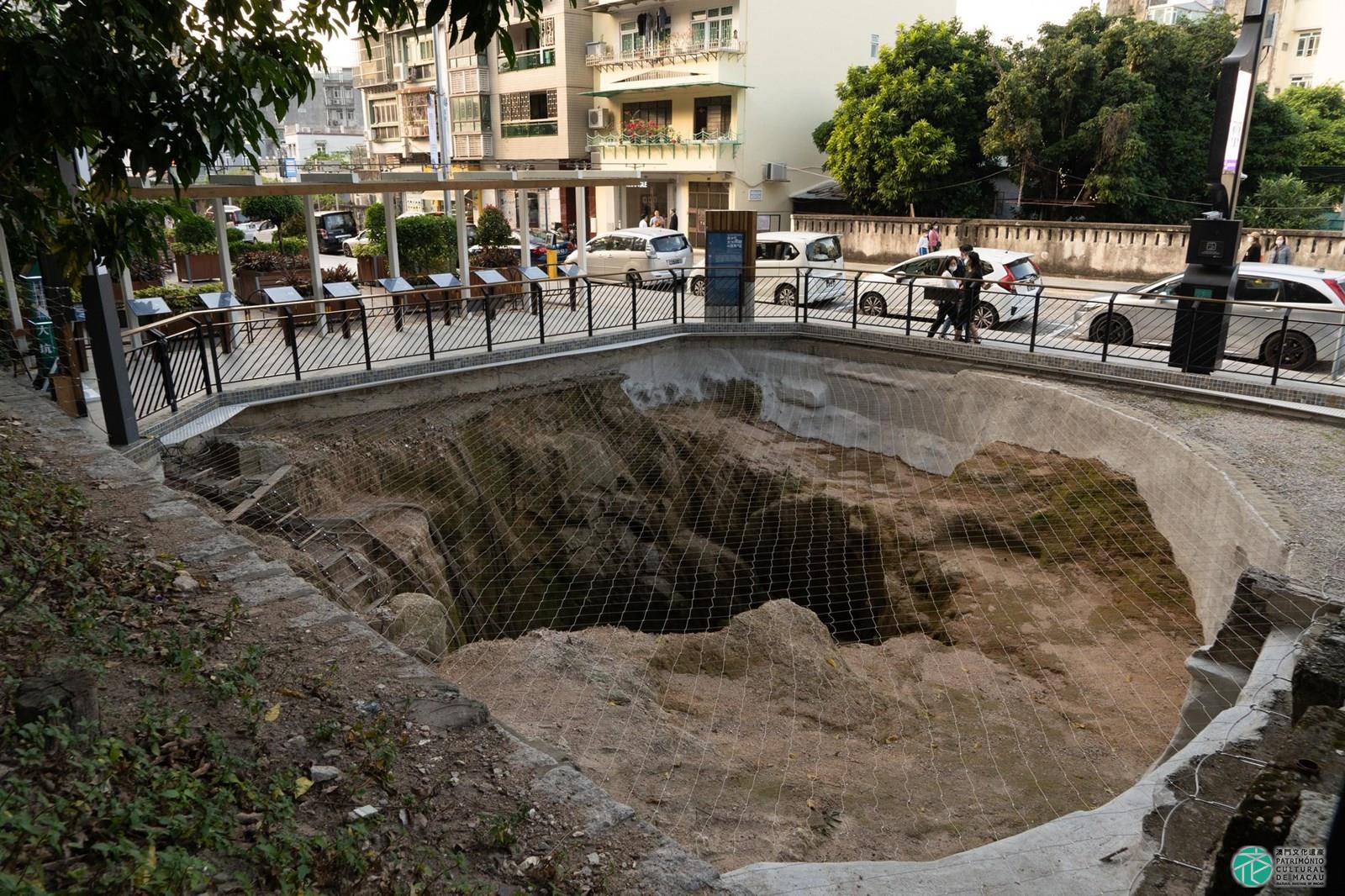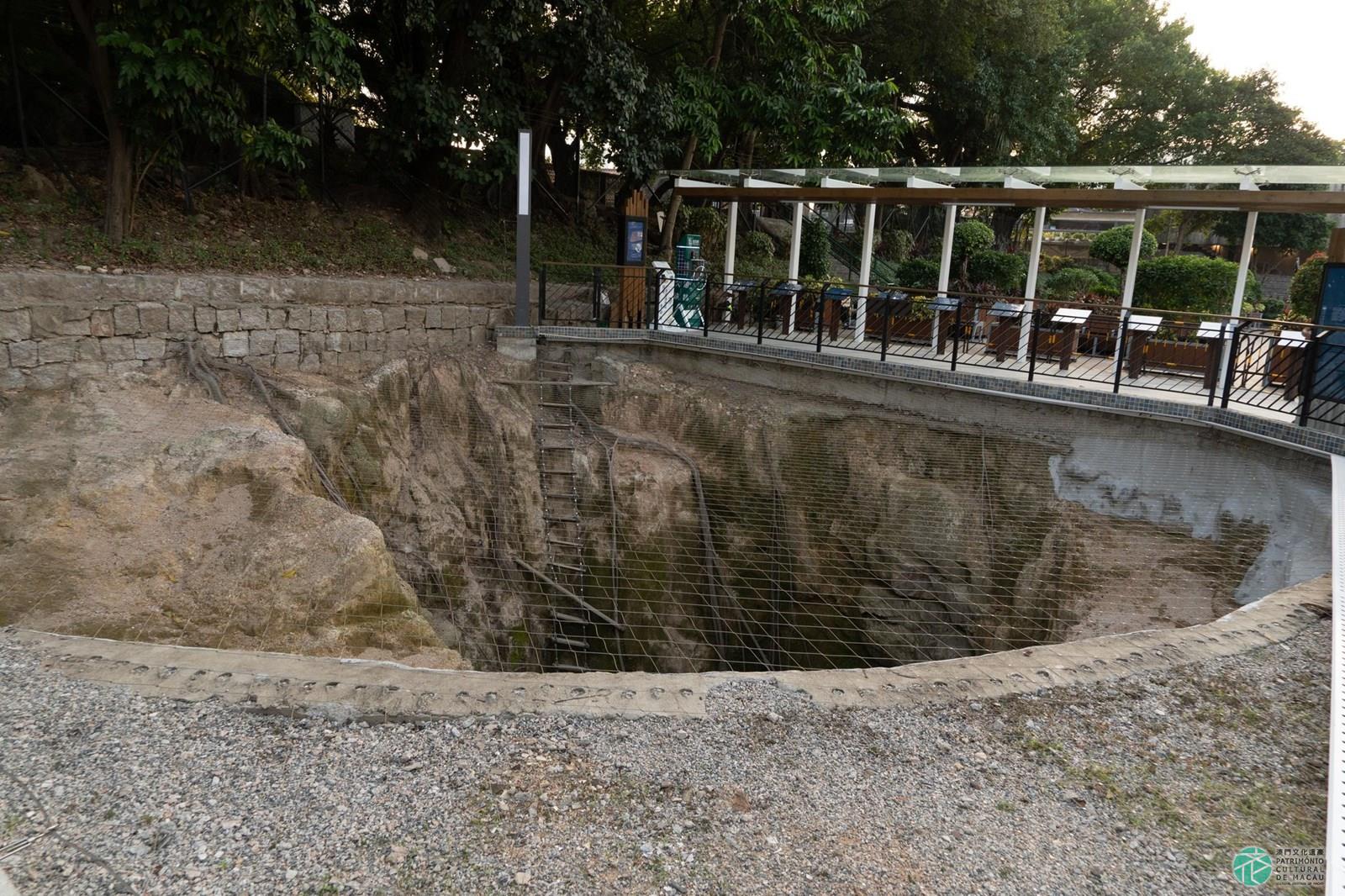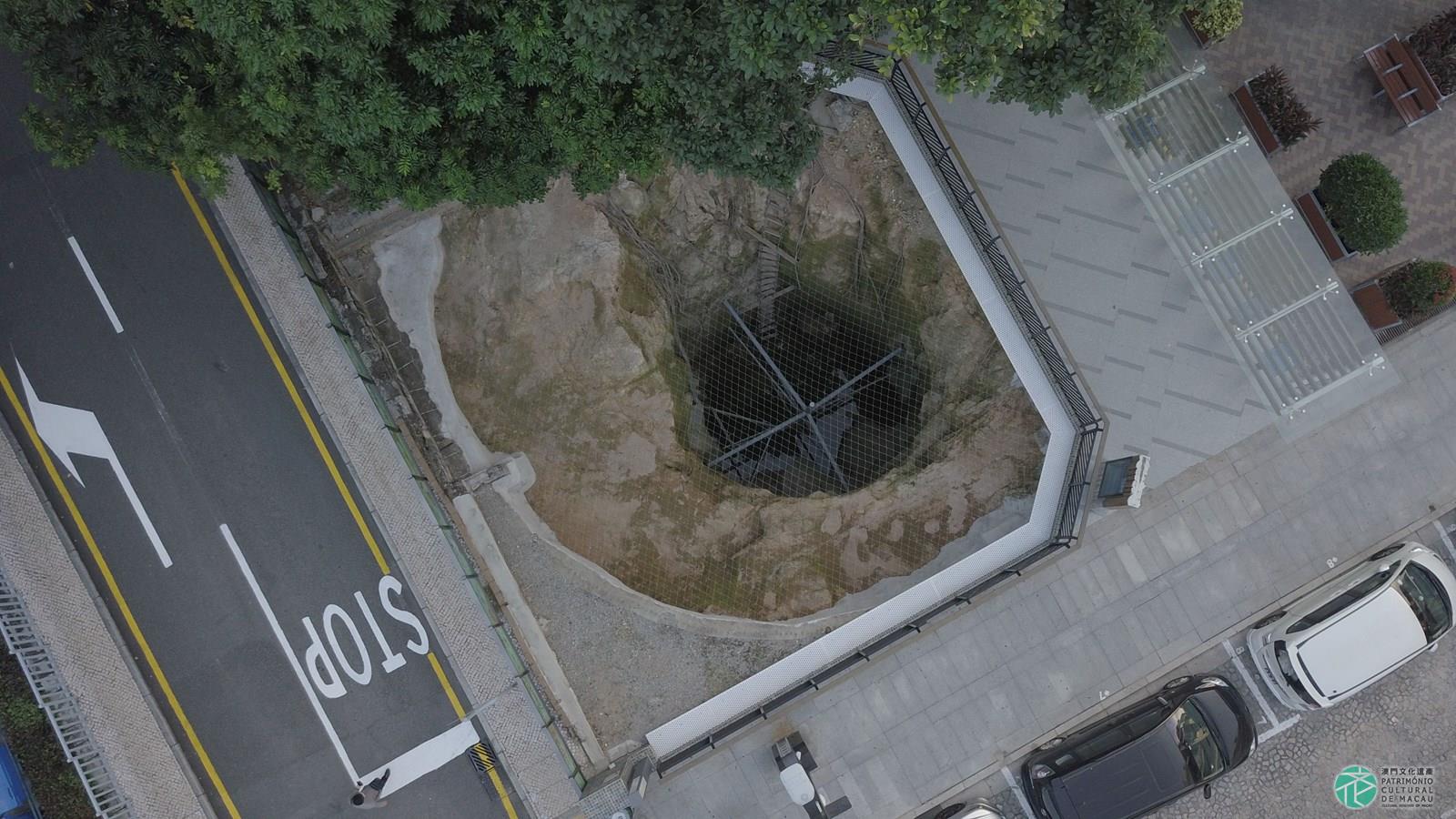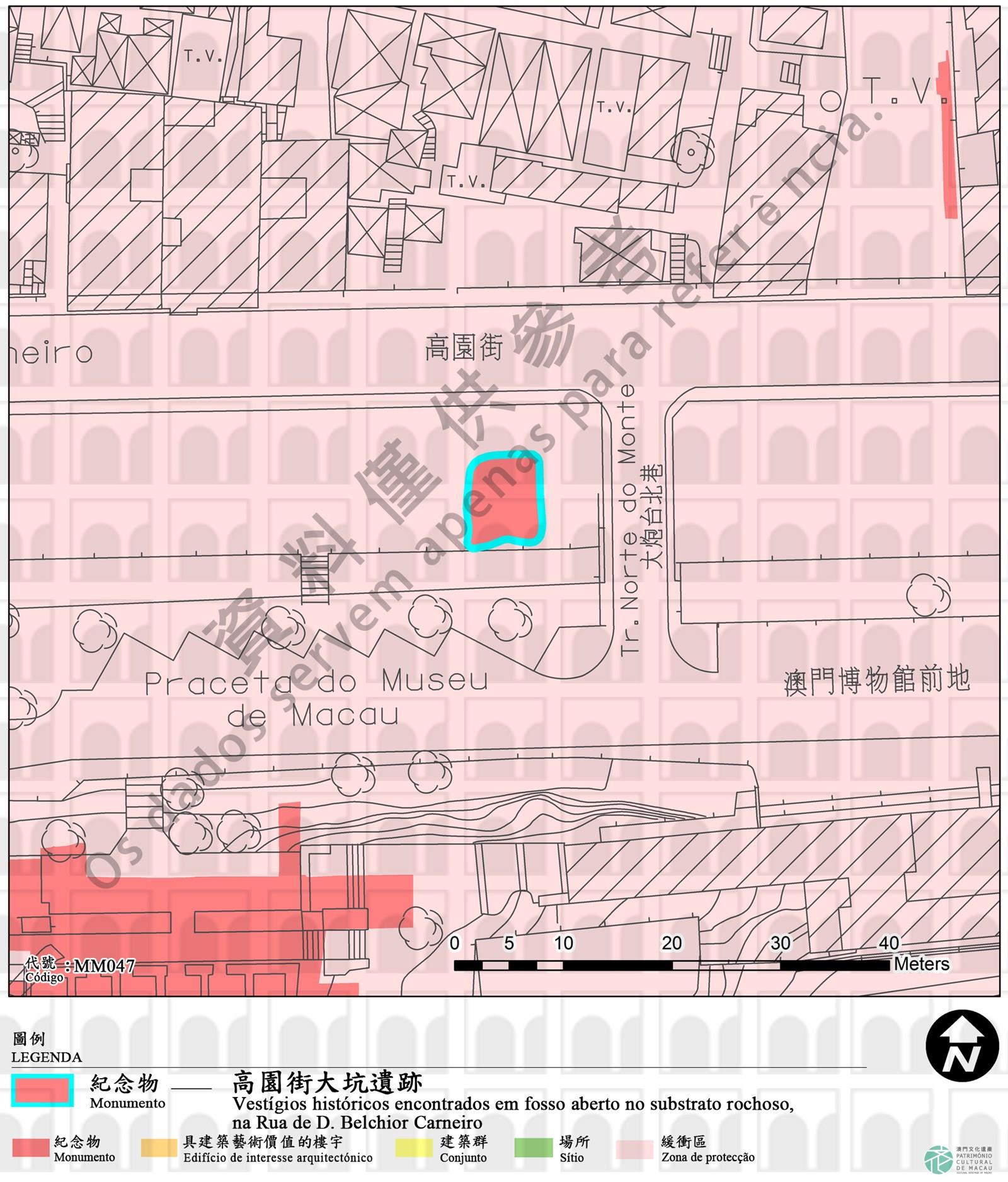Between 2010 and 2012, the Cultural Affairs Bureau commissioned the Institute of Archaeology of the Chinese Academy of Social Sciences to carry out four phases of archaeological fieldwork in the area of the former St. Paul's College located at no.16-22, Rua de D. Belchior Carneiro. During the fieldwork, a large and slightly circular pit with a diameter of around 5.8 metres and a depth of 9.9 metres was found at no. 20 on the same street. The pit is a man-made vertical cylindrical well excavated on the bedrock at the northern foot of Mount Hill. When excavated, the pit walls were found to be slightly different from each other. On the west and the north walls, the sections within 3 metres below the ground surface are more upright and show a more regular structure; past 3 metres below the ground surface, larger protruding rocks with uneven edges and corners were found, which may be a result of difficulties in the excavation process due to the hardness of the rocks. From top to bottom, chisel marks from the manual excavation process can be seen at different spots on the excavated stone walls.
Numerous archaeological remains have been unearthed from the pit, including ceramic and porcelain fragments and architectural items, such as shards of blue-and-white porcelain bowls, dishes and box lids featuring floral, bird, deer and other hand-drawn motifs, and many of the items are Kraak porcelain which were to be exported for sale. Also included in the unearthed items are dark brown-glazed pottery jars, celadon-glazed pottery bowls and other ceramic containers, as well as drip tiles, flat tiles, round eave tiles with floral motifs, firing discs, and capiz shell products. According to the researchers, the porcelain items are mainly dated between the late 16th century and the early 17th century, which approximately falls within the period from the later years of Emperor Wanli’s reign to the reigns of Emperor Tianqi and Chongzhen in the Ming dynasty, and some date back to the reign of Emperor Kangxi in the Qing dynasty. These porcelain shards were mostly manufactured at private kilns in Jingdezhen. It is deduced that the pit was a large man-made project, as it is almost 10 metres in depth, and is carved out at the bedrock with a rather clear-cut shape and structure, and traces of modification are clearly evident on the four walls. Therefore, the researchers believe it is possible that this pit is related to the well mentioned in the Cartas Ânuas do Colégio de Macau (Annual Reports of St. Paul's College of Macao).
Since their settlement in Macao, the Portuguese have used the city as a base for foreign trade and exported silk, porcelain and other Chinese products to Japan, Southeast Asia and Europe. The relics unearthed from the Remains of the Man-made Pit on Rua de D. Belchior Carneiro, including the huge number of ceramic and porcelain fragments dated between the late Ming dynasty and the early Qing dynasty, are of great significance to the study of Macao’s history and bear witness to the crucial role Macao has played as a major transit port and trade centre for the Sino-Western maritime trade along the Maritime Silk Road.
